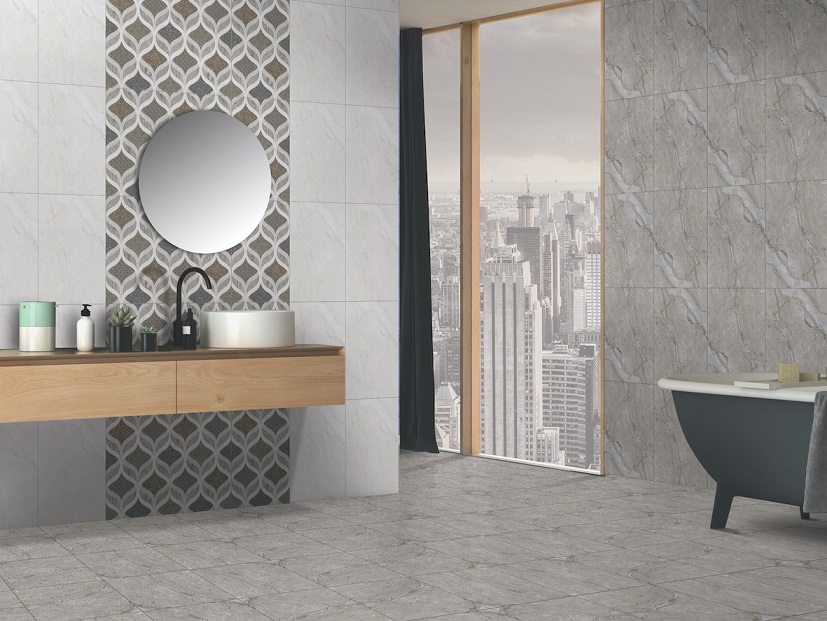
Bathroom vanities are the centerpiece of any bathroom, combining function and style in one essential element. Selecting the right material for your bathroom vanity not only enhances the aesthetic appeal of your space but also ensures durability and ease of maintenance. In this guide, we’ll explore various materials commonly used for bathroom vanities, share some lifehacks for maintaining them, and answer frequently asked questions to help you make an informed decision.
Popular Materials for Bathroom Vanities
- Solid Wood
- Pros: Solid wood vanities offer timeless appeal and robustness. They are highly durable and can be refinished if scratched or worn.
- Cons: Wood can warp or crack in humid environments unless properly sealed and maintained.
- Lifehack: To prevent moisture damage, ensure your bathroom is well-ventilated and consider applying a waterproof sealant to the wood.
- MDF (Medium-Density Fiberboard)
- Pros: MDF is an affordable and versatile option, often used in painted or laminated vanities. It’s resistant to cracking and peeling.
- Cons: MDF is less durable than solid wood and can swell if exposed to excessive moisture.
- Lifehack: Use silicone caulk around edges where water might seep in to prolong the life of your MDF vanity.
- Plywood
- Pros: Plywood offers a good balance of durability and cost. It’s less prone to warping compared to solid wood and handles moisture better.
- Cons: While more moisture-resistant than MDF, plywood can still suffer damage if not properly sealed.
- Lifehack: Choose a vanity with a marine-grade plywood base for enhanced water resistance, especially in high-humidity areas.
- Natural Stone (Marble, Granite, Quartz)
- Pros: Natural stone countertops are luxurious, heat-resistant, and durable. Each piece of stone is unique, adding a one-of-a-kind element to your bathroom.
- Cons: Stone can be expensive and requires regular sealing to prevent staining and damage.
- Lifehack: Use a high-quality stone sealant at least once a year to protect your countertop from moisture and stains.
- Ceramic or Porcelain
- Pros: These materials are water-resistant, easy to clean, and come in various colors and styles. They’re also relatively affordable.
- Cons: Ceramic and porcelain can chip or crack under heavy impact.
- Lifehack: Install mats or rugs in areas where heavy objects are likely to fall to minimize the risk of chipping.
- Glass
- Pros: Glass vanities offer a sleek, modern look and are easy to clean. They’re also resistant to water and staining.
- Cons: Glass can show fingerprints and water spots easily and may shatter if struck with force.
- Lifehack: Use a water-repellent glass cleaner to minimize water spots and make cleaning easier.
FAQs About Bathroom Vanities
- What is the most durable material for bathroom vanities?
- Natural stone and solid wood are among the most durable materials, with proper care. Plywood is also a sturdy option for those looking for a balance between durability and cost.
- How do I maintain a wood vanity in a humid environment?
- Ensure your bathroom is well-ventilated, use a dehumidifier if necessary, and regularly apply a waterproof sealant to protect the wood from moisture.
- Are glass vanities hard to maintain?
- While glass vanities can show fingerprints and water spots, regular cleaning with a water-repellent cleaner can keep them looking pristine. They are generally low-maintenance and easy to wipe clean.
- Can I use marble for a bathroom vanity?
- Yes, marble is a popular choice for vanities due to its luxurious appearance. However, it requires regular sealing to prevent stains and etching from acidic substances like soap or toothpaste.
- What’s the best budget-friendly material for a bathroom vanity?
- MDF and ceramic are budget-friendly options that still offer durability and style. Plywood is also cost-effective and more durable than MDF.
Conclusion
Choosing the right material for your bathroom vanity depends on your style preferences, budget, and the specific needs of your bathroom environment. Whether you opt for the classic elegance of natural stone or the budget-friendly versatility of MDF, keeping in mind the maintenance tips and lifehacks mentioned above will help you enjoy a beautiful and long-lasting vanity.
